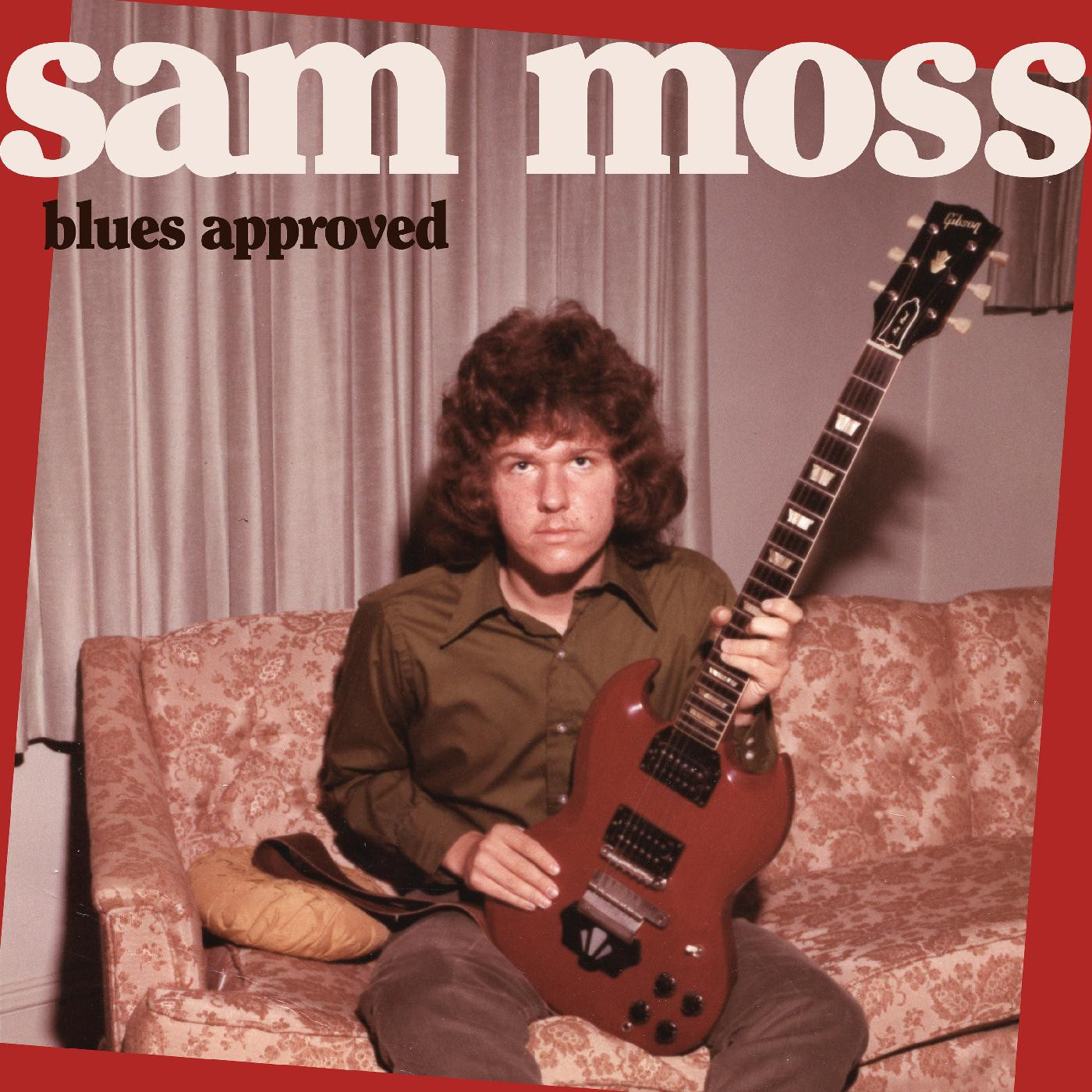Sam Moss – Blues Approved
You’d be entirely forgiven if you’ve never heard of Sam Moss. Few of us have. Yet this is an interesting curio for a man who seems an archetype for many of the more dedicated musical characters we grew up with in the late ‘60s and ‘70s. A tale both happy and sad, the story of Sam Moss might’ve been entirely lost without the discovery of tapes, originally recorded in ’77 and found – pure chance – by Chris Stamey in 2020, while searching for archived db’s’ recordings. The Asheville-born Moss was a local hero amongst musicians in his adopted hometown of Winston-Salem, North Carolina. They all hung out and played together in the small, yet burgeoning, scene. A member of multiple local bands, fans grew attached to Moss’ live energy and ability to merge his many influences into something ‘blues approved’. Truth be told, Moss’ sense of adventure blended as much rock influence as anything else. Growing up alongside lifelong friend, Mitch Easter (Let’s Active) didn’t hurt – and Moss enlisted Easter to record these initial tracks on a lowly 4-track while accompanying him on drums. Moss supplied guitar, bass and vocals. A second set of recordings from ’89-’93 are included, featuring a full band – a collection of covers which truly display Moss’ eclectic tastes. Entirely remixed and restored by Stamey, Easter and sometime band-mate Gene Holder, the album begins with “Rooster Blood”. It’s Moss’ vocals that quickly command attention – a hybrid of Nick Gravenites/Paul Butterfield-era blues, with a bit of a drawl and a dollop of soul (some may hear elements of Al Kooper). The addition of sax (Crispin Cioe) and organ (Chris Stamey) rounds out the sound while all of Moss’ work delivers the inventive, high-quality guitar solos which were his claim-to-fame and well worth the listen. Likewise, “King of My Hill” is another slowed-down blues number featuring a strong vocal, beefy bass, horns and a sturdy guitar solo (between barks of a dog). The soul chestnut, “Ain’t That Peculiar”, made so essential by Marvin Gaye, is another slice of Moss – here recorded with full instrumentation, backup singers and all the extras (from the later recording session) with Moss’ vocals doing a stellar job. Turn up an element of Stones-like rock and ”Vida Blanche” is another strong foot forward, vocally and guitar-wise. The Bloomfield-penned “If You See My Baby” is another slow blues number with the augmented band and some great harp from Mike “Wezo” Wesolowski, as Moss adds sturdy solo guitar. One of the strongest tracks is “Trying to Do Better”, as Moss injects it with a convincing shot of R&B groove, adding inventive guitar parts along the way. His own “To Those Still at Sea” increases more of a dynamic rock feel, suggesting some of that famous “Easter jangle”, together with tough guitar lines. ”My Man Mike” is a comparably simple song, adding a funk bass feel.
Best track on the album – as good a singer as Moss proves to be – is the vividly instrumental “Nightflight Over Berlin”- a much harder-edged rocker teasing shades of Hendrix, if not predating Satriani. The trippy Easter drumbeat fires up “PJ” as Moss provides a talking vocal and some very progressive guitar sounds. Out of the blue, comes a poorly recorded live take from ’67 with Moss’ band the Clique, covering Buck Owen’s “Act Naturally”. Speaking of eclecticism, try on Moss’ respectful take on Goffin/King’s “Pleasant Valley Sunday”, first popularized by The Monkees. A stand-out performance, peeling off yet another layer of Moss’ wide-ranging love of music, is “Can’t Get Used to Losing You” (Pomus/Shuman) – an instrumental work of art eclipsing Andy Williams’ version. The Stone’s own “Who’s Driving Your Plane?” – another bonus track with the full band – is a slow, guitar-and-piano-driven singalong (group vocal) boasting requisite swagger.
One take. Mostly self-penned originals. Sam Moss was a significant singer, bassist, guitar player and songwriter who never got his due. In later years, his passion for vintage guitars found him opening his own music shop, keeping his hand in the business, continuing to play in local bands. Yet, when his beloved wife succumbed to cancer in 1998, the broken-hearted Moss, swimming in medical bills and life’s complications, eventually committed suicide in 2007.
Thankfully, Moss was recently honoured with the star that always evaded him in real life, found on Winston-Salem’s downtown Walk of Fame. Perhaps fans can keep it shining. (Eric Thom)










